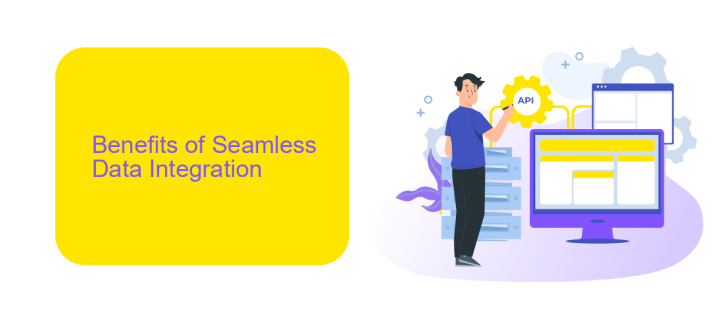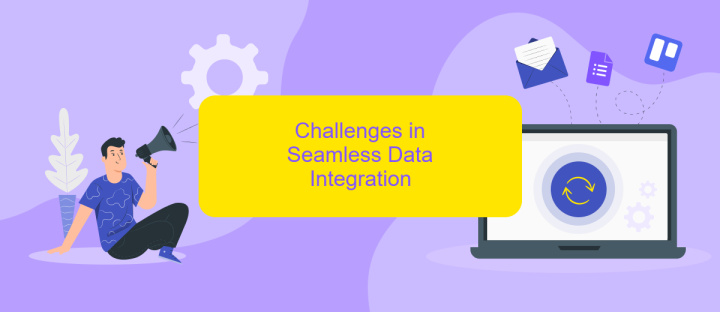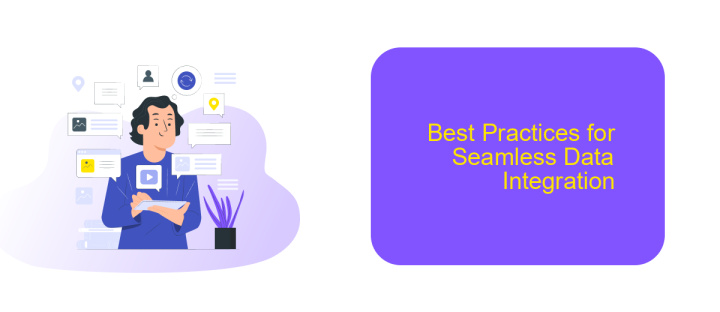Seamless Data Integration
Seamless data integration is crucial in today's interconnected digital landscape, enabling businesses to unify diverse data sources into a coherent and accessible system. By eliminating data silos and ensuring smooth data flow, organizations can enhance decision-making, streamline operations, and foster innovation. This article explores the key strategies, tools, and benefits of achieving seamless data integration in modern enterprises.
Understanding Seamless Data Integration
Seamless data integration refers to the process of combining data from different sources and providing users with a unified view of this information. This process ensures that data flows smoothly between systems without manual intervention, reducing errors and improving efficiency. Achieving seamless data integration can be complex, but it is essential for businesses aiming to leverage their data effectively.
- Automated data synchronization between disparate systems
- Real-time data access and updates
- Minimization of data redundancy and errors
- Enhanced data quality and consistency
- Scalability to handle growing data volumes
Tools like ApiX-Drive simplify the integration process by providing a platform that connects various applications and automates data transfer. With ApiX-Drive, businesses can set up integrations without coding, ensuring that data is always up-to-date and accessible across all systems. This not only saves time but also allows teams to focus on more strategic tasks, driving overall business growth.
Benefits of Seamless Data Integration

Seamless data integration offers numerous benefits, significantly enhancing operational efficiency and decision-making processes. By automating data transfer between disparate systems, businesses can reduce manual data entry errors and ensure that information is consistently up-to-date across all platforms. This leads to more accurate analytics, enabling better strategic planning and faster response times to market changes. Additionally, seamless integration minimizes the time spent on data management, allowing employees to focus on more value-added tasks.
Moreover, the use of integration services like ApiX-Drive simplifies the setup and maintenance of these connections. ApiX-Drive provides a user-friendly interface that allows even non-technical users to link various applications and data sources effortlessly. This not only accelerates the implementation process but also reduces the dependency on IT departments for ongoing support. As a result, businesses can achieve greater agility, streamline their workflows, and enhance overall productivity, making seamless data integration a critical component of modern enterprise infrastructure.
Challenges in Seamless Data Integration

Seamless data integration is a critical aspect of modern data management, but it comes with its own set of challenges. These challenges can hinder the smooth flow of data across different systems, affecting the overall efficiency and accuracy of business operations.
- Data Compatibility: Different systems often use varied data formats, making it difficult to integrate them seamlessly.
- Data Quality: Ensuring the accuracy, consistency, and completeness of data from multiple sources can be challenging.
- Security Concerns: Integrating data from different systems increases the risk of data breaches and unauthorized access.
- Scalability Issues: As data volume grows, maintaining seamless integration becomes increasingly complex.
- Cost and Resource Allocation: Implementing and maintaining data integration solutions can be expensive and resource-intensive.
Tools like ApiX-Drive can help mitigate some of these challenges by providing a platform for easy and secure data integration. ApiX-Drive supports various data formats and ensures high data quality, making it a valuable asset for businesses aiming for seamless data integration.
Best Practices for Seamless Data Integration

Seamless data integration is crucial for maintaining the efficiency and accuracy of business processes. To achieve this, it is essential to follow best practices that ensure smooth and reliable data flow across systems. Proper planning and execution can help prevent common pitfalls and enhance overall data management.
One of the key steps in seamless data integration is to choose the right tools and platforms. Utilizing services like ApiX-Drive can simplify the integration process by providing user-friendly interfaces and automated workflows. This ensures that data is consistently and accurately transferred between applications without manual intervention.
- Define clear data integration goals and objectives.
- Choose the right integration tools and platforms.
- Ensure data quality and consistency across systems.
- Monitor and maintain integrations regularly.
By adhering to these best practices, organizations can achieve seamless data integration that supports their business objectives. Leveraging tools like ApiX-Drive can further streamline the process, allowing businesses to focus on their core activities while ensuring data integrity and reliability.
Future Trends in Seamless Data Integration
As technology continues to evolve, the future of seamless data integration is set to be shaped by advancements in artificial intelligence and machine learning. These technologies will enable more sophisticated data mapping, transformation, and error detection processes, making integrations more efficient and less prone to human error. Additionally, the rise of the Internet of Things (IoT) will generate vast amounts of data that need to be integrated seamlessly across various platforms, pushing the boundaries of current integration capabilities.
Another significant trend is the growing adoption of low-code and no-code platforms, which empower non-technical users to set up and manage data integrations with ease. Services like ApiX-Drive are at the forefront of this movement, offering user-friendly interfaces and pre-built connectors that simplify the integration process. This democratization of data integration tools will enable businesses of all sizes to harness the power of seamless data integration without the need for extensive technical expertise.
FAQ
What is seamless data integration?
Why is seamless data integration important for businesses?
How can I achieve seamless data integration in my organization?
What are the common challenges in seamless data integration?
How does ApiX-Drive help in seamless data integration?
Time is the most valuable resource in today's business realities. By eliminating the routine from work processes, you will get more opportunities to implement the most daring plans and ideas. Choose – you can continue to waste time, money and nerves on inefficient solutions, or you can use ApiX-Drive, automating work processes and achieving results with minimal investment of money, effort and human resources.

